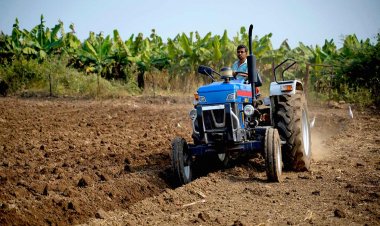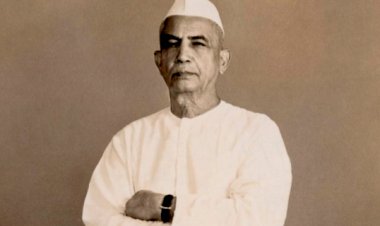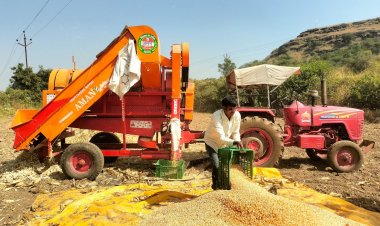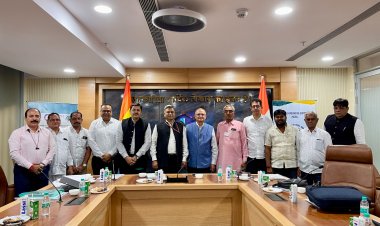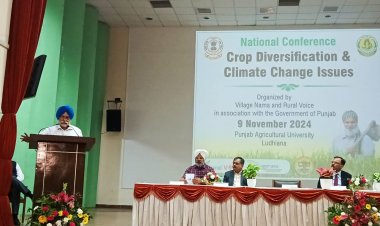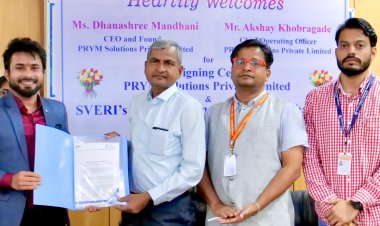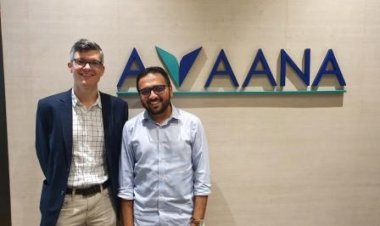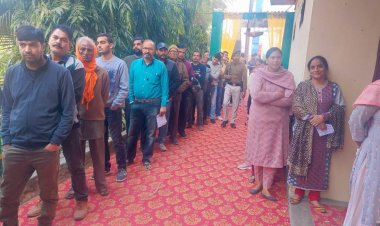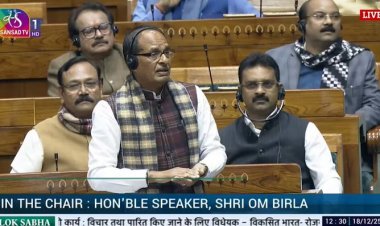Vocal for local through strengthening panchayats in UP
The new Government headed by Yogi Adityanath has been formed in Uttar Pradesh (UP). Prime Minister Narendra Modi ji says that the mindset of free India should be “vocal for local”. But how will this be possible? The way to achieve this is to strengthen the Panchayati Raj Institutions (PRIs), where more than eight lakh elected representatives need to be engaged effectively and gainfully.
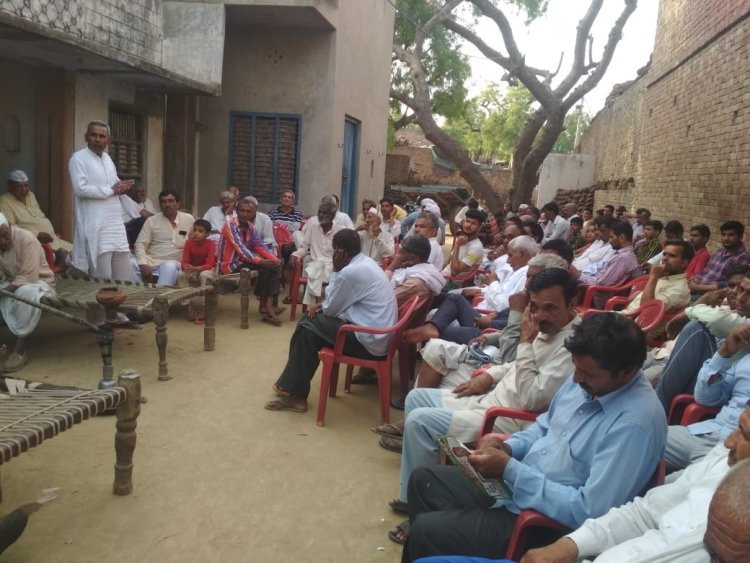
The new Government headed by Yogi Adityanath has been formed in Uttar Pradesh (UP). Prime Minister Narendra Modi ji says that the mindset of free India should be “vocal for local”. But how will this be possible? The way to achieve this is to strengthen the Panchayati Raj Institutions (PRIs), where more than eight lakh elected representatives need to be engaged effectively and gainfully.
In this piece, how local can be made vocal has been stressed. But first a few comments on the Budget analysis. The Budget analysis of the State carried out by the author in Rural Voice indicated that the Budget Estimates (BE) of 2020-21 stood at Rs 31,402 crore for rural development, which was reduced to Rs 27455 as BE for 2021-22, indicating a reduction of 13 per cent. Conversely, in the case of urban development, BE for 2020-21 was Rs 20,461 crore, which was scaled up to Rs 23,980 cores as BE for 2021-22, indicating an increase of more than 17 per cent. If BE for 2021-22 for urban development is compared with the Revised Estimates (RE) for 2020-21, it indicates an increase of as much as 58 per cent. This implies that urban development has been given more importance than rural while the problems of urban areas might be said to be ones of those migrating from rural areas.
The analysis also revealed that out of the total expenditure in the state, 5.4 per cent was for rural development, which is lower than the average allocation for rural development by states (6.1%) in the country. The analysis shows that more funds are required for rural development. Secondly, there are 75 Zila Panchayats (ZPs), 822 Kshetra Panchayats (KPs) and 75,212 Gram Panchayats (GPs) in the State, in which 8,26,458 elected representatives have been working as members, chairpersons of subject committees and Presidents of GPs, KPs and ZPs. For more than 8 lakh elected representatives to be vocal, they must have adequate capacity to steer the Panchayats, they must have adequate powers and resources at their disposal.
The 73rd Constitutional Amendment expects the KPs, ZPs and GPs to prepare plans for economic development and social justice with spatial ‘flavour’, including the 29 subjects listed in the 11th Schedule of the Constitution. These 29 subjects include agriculture, poverty alleviation, health, education, social welfare and maintenance of community assets. Presently, in place of plans for economic development and social justice, development plans are being prepared at GP, KP and ZP levels. This exercise is supposed to be completed by the mobilization by the Panchayats of their own resources. By way of mobilizing their own resources, they could be acting as accountable institutions at local levels and that element would impute vocalism at the local level.
In the present context, let us recapitulate what the purpose and responsibilities of the Governments were when the Panchayat Bill was introduced in Parliament. The then Rural Development Minister G Venkatswamy, while introducing the Constitution (Seventy-Third Amendment) Bill in the Parliament on 1 December 1992, said that ‘this casts a duty on the centre as well as the states to establish the VPs so as to make them effective, self-governing institutions’. And that by introducing this Bill, the Government was fulfilling Mahatma Gandhi’s dream of Gram Swaraj. Has this been happening what was said three decades before? Has the dream of Gandhi been fulfilled? Where is the role of the state as was envisaged while introducing the bill in the Parliament?
In the above context, the following suggestions are being offered to strengthen the process of how local can be made vocal in the State:
- In order to make GP, KP and ZP function effectively, various committees such as Krishi, Udoyog evam Nirman Samiti, Shiksha evam Jan Swasthya Samiti, Niyon Samiti, Samta Samiti, Karya and Vitta Samiti are supposed to be constituted and activated, enabling them to discharge various functions of the GP, KP and ZP with the involvement of members.
- Executive powers must be given to the ward level in order to strengthen the lowest rung of decentralized democracy. The State may learn from Bihar, where such an experiment is already underway.
- Budget, Accounts and Audits should also be maintained by the Panchayats. The Fifteenth Finance Commission (FFC) has imposed conditions for the accounts of the Panchayats. If accounts are not maintained, funds will not be released by the FFC to the Panchayats. The State Finance Commission should also note this and also reiterate it at its level.
- Both elected and officials must be trained properly. Adequate training and capacity-building facilities must be developed at different levels. Uttar Pradesh (Uttarakhand also) has a chain of institutions at the district and regional levels. They must have adequate training hardware and software at their levels. Proper follow-up of trained personnel may be scheduled to know whether the knowledge, skill and attitude gained by the trainees have been put into practice or not. If not, remedial measures may be taken up subsequently. The trainers at training institutions would be imparting training to trainees with the help of smartphones. After imparting training, there would be a six-month follow-up by the trainers with the trainees about the level of understanding in terms of what was taught to them and whether the extent of activities like holding meetings/calling all members of GPs has materialized or not. Every month, the trainers would be asking the trainees about the practical aspects of the training imparted. For example, whether the ward member was invited in the meeting of GP. If not, the trainer would record it and send the recorded message to nominated officers of the government for appropriate action to be taken in the matter. A similar procedure would be followed for other things taught in the training. There would be an inbuilt mechanism for checking, evaluating and taking necessary action.
- What are SDGs? How could these be localized at the Panchayat level? What are the grey areas where more stress is required? These issues must be taken into action. If Panchayats are functioning as they are supposed to, there would not be any problem in achieving the objectives of the SDGs.
- Panchayats are financially and technically underequipped to perform core functions such as water supply, rural roads, street lighting, sanitation, and primary health. The 2nd Administrative Reforms Commission (ARC) was also of the opinion that the internal resource generation at the Panchayat level was weak due to a thin tax domain and their reluctance to collect revenue. Hence, sufficient fixed capital investment is needed to create socio-economic assets, such as water supply systems, solid and liquid waste disposal systems, public parks, playgrounds, market complexes, public libraries, public ponds, etc. Panchayats may fix user charges for these services or lease out the assets to increase their revenue. Because without sharing of funds or without OSR (own source resources) of PRIs, accountability at the local level would not be established.
To conclude, participatory governance, planning and development should be made an integral part of the state’s governance so that local can be made vocal.
(The author is a former officer of the Indian Economic Service. The views expressed here are personal.)



 Join the RuralVoice whatsapp group
Join the RuralVoice whatsapp group

















